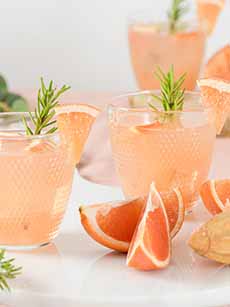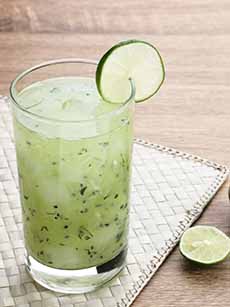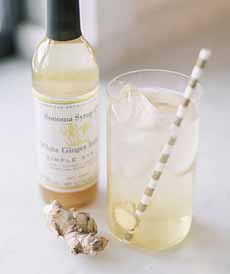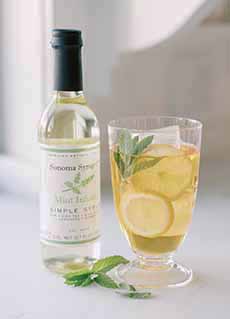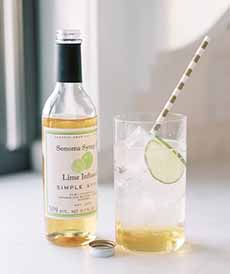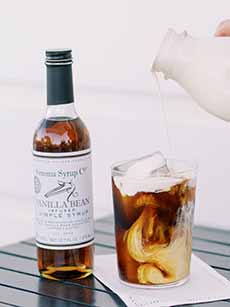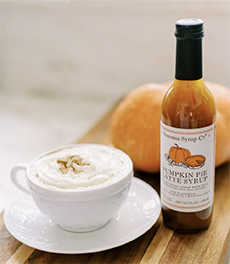Dry January Mocktail Recipes Including A Coffee Mocktail
|
Whether you’re embracing Dry January or simply in the mood for a zero-proof mocktail, these refreshing drinks are made with a base of sparkling water and infused simple syrup. With flavored simple syrup and sparkling water, these recipes are proof (no pun intended) that mocktails can be just as fun and fancy as cocktails. Thanks to Sonoma Syrups, producer of artisan simple syrups and other products for mixology, for the recipes. > Head to SonomaSyrup.com to see all of the great simple syrup flavors, and wonderful recipes that use them, from drinks to desserts to sauces, glazes, and more. > If you want to make your own simple syrup, here’s the recipe. > If you want a low-calorie wine spritzer, head here. > The history of the spritz/spritzer. > The history of simple syrup is below. > The different types of sugar and syrup: a photo glossary. For truly great flavor, squeeze your own grapefruit juice. 1. COMBINE the first three ingredients. Pour over ice, top with sparkling water, and stir gently. 2. GARNISH and serve. 1. MUDDLE the cucumbers, mint leaves, and lime juice together in a highball glass. 2. TOP with sparkling water and stir gently. Pour over ice and serve. 1. COMBINE the cold brew with the orange juice and/or cream. Pour over ice. 2. TOP with sparkling water and stir once gently. Garnish and serve. Simple syrup is a fundamental ingredient in making sweet cold drinks. The recipe is simply sugar dissolved in hot water, with optional flavorings. It has likely been around since sugar cane juice was first crystallized. Originally, people chewed on the raw sugar cane stalks to enjoy the sweetness from the sap. Refined sugar appears around 500 B.C.E. when residents of what is now India began to make sugar syrup from cane juice. They boiled the sap, then cooled it to make crystals that were easier to store and transport. These crystals were called khanda—the source of the word candy. > Here’s more history of sugar, plus the history of sugar cane. The early history of punch is not well documented, but the earliest mention, in 1632, is from an employee of the East India Company, trading in India. It was a hot drink made from alcohol, sugar, lemon, water, and tea or spices. The recipe arrived in Britain along with granulated sugar, and enabled the sweet punch recipes we know today. While hot punch was favored in cold weather (think of a hot toddy), cold punch evolved along with iced drinks. Ice became affordable to most Europeans and Americans in the 19th century. Widespread use of simple syrup emerged alongside the rise of mixed chilled drinks and cocktails in the 18th and 19th centuries. Bartenders and home mixologists needed a way to efficiently sweeten drinks without stirring furiously to get granulated sugar to dissolve (the history of cocktails). During the 1800s, simple syrup became a crucial component in early cocktails like the Sazerac, Old Fashioned, among others. Its standardized 1:1 ratio of sugar to water made it easy for bartenders to consistently sweeten drinks. The term “simple syrup” itself likely came from the simplicity of its preparation compared to more complex syrups used in confectionery and cooking. By the late 19th century, with the rise of soda fountains across America, simple syrup became essential for creating carbonated beverages and flavored sodas. Soda jerks would combine simple syrup with various flavor extracts to create popular drinks. Flavored simple syrup exploded with the massive growth of coffee culture in the 1990s, it’s now commonly used in flavored coffee and tea drinks as well. That Pumpkin Spice Latte: simple syrup. That Hazelnut Frappuccino: simple syrup. The basic recipe has remained largely unchanged over the centuries, although variations like rich simple syrup (2:1 sugar to water ratio instead of the classic 1:1) and flavored versions have become popular even for home use. Some bartenders and mixologists now develop simple syrup using different types of sugar (coconut, demarara, muscovado, turbinado, e.g.) or add herbs and spices during preparation to create more complex flavor profiles. Beyond drinks. If you have a bottle of flavored simple syrup, it comes in handy for baking and dessert including baked or marinated fruit, marinades and glazes, Fruit—baked apples, marinate fruit that isn’t sweet enough. You can combine it with sparkling water to make your own, all-natural, sodas, and flavor ice cream drinks: malts, shakes, and sodas. |
|
|
|
CHECK OUT WHAT’S HAPPENING ON OUR HOME PAGE, THENIBBLE.COM. |
||
